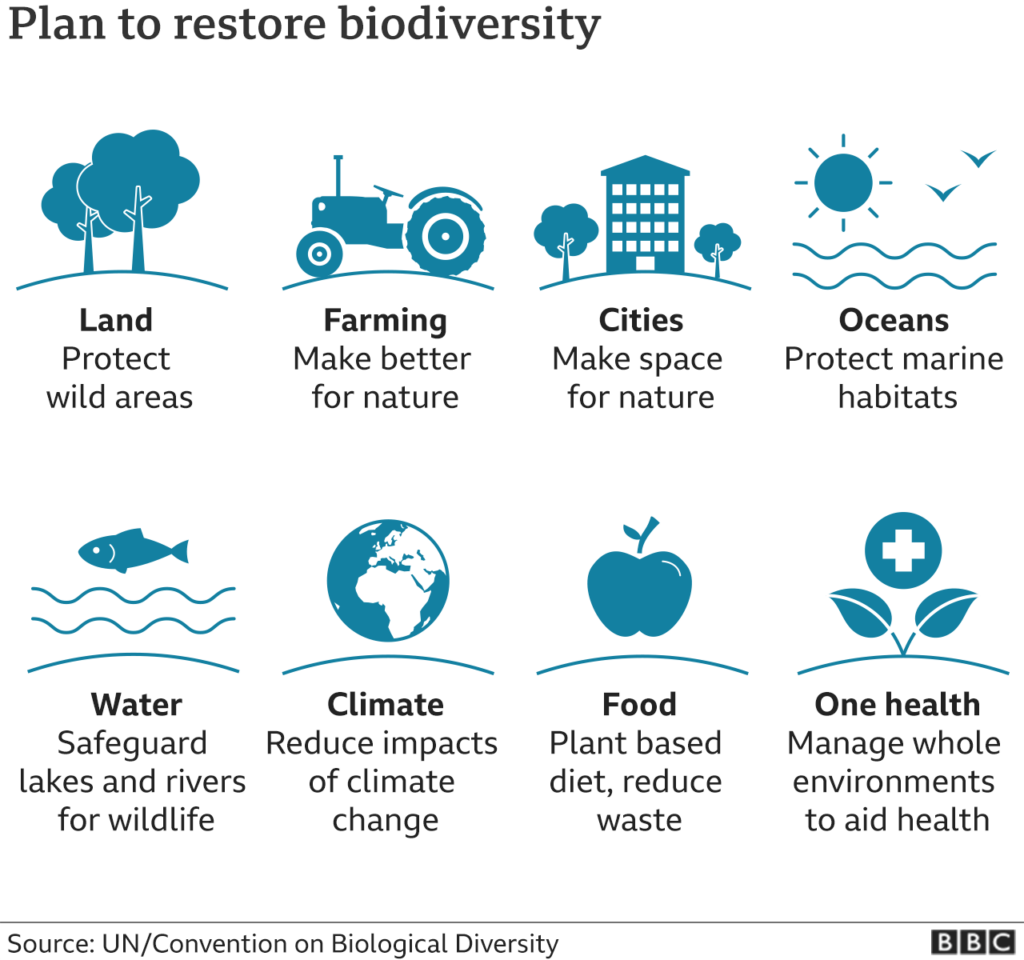What is biodiversity?
Biodiversity is a term you may hear a lot, but what does it actually mean? A simple way to define it is that it describes the variety of plant and animal life in a given area. The more biodiverse an area is, the more ecosystem services it provides. When trying to imagine the complexity and intricacy of biodiversity, next time you are outside in nature, think about all the living animals, plants, and micro-organisms around you and how they interact with each other and form an ecosystem.
Thriving biodiversity supports life as we know it, however, when biodiversity is diminished, many ecosystems crumble which affects the availability of “food, clean water, medicine, and shelter” (WWF). When ecosystems are out of balance, the species within that ecosystem suffer due to lack of adequate food or a stable environment which enables species extinction to occur at a rapid rate.
On a human level, conserving biodiversity is not just important to enable future generations to enjoy nature – it is essential to continue the survival of our species.
What happens without thriving biodiversity?
When ecosystems are under threat, change to the environment and species chain will be altered, sometimes to the point of no repair. To prevent this from occurring, we must do all we can to protect our ecosystems and repair any damage that we may cause. It is vital that we work together internationally to ensure the wide variety of ecosystems worldwide are protected from human impact. To read more about recent global action agreed at COP15, the UN Biodiversity Conference, read our round-up blog post.

What do I need to know about the biodiversity crisis?
Unfortunately, humans have damaged many ecosystems globally and without rapid reversal, some of these ecosystems will no longer function effectively. Biodiversity is under a major threat, and this is clear due to the very rapid level of species decline. WWF’s 2022 Living Planet Report found an “average 69% decline in global populations of mammals, fish, birds, reptiles and amphibians since 1970”. If this level of species decline continues, the world will face an extremely high number of animals becoming endangered and potentially extinct, which will induce irreversible damage to ecosystems.
Like climate change, we can prevent these catastrophic events from occurring if we change our behaviours and work as an international community to reduce and reverse negative ecological impacts.
What factors are contributing to the biodiversity crisis?
- Climate change
- Habitat loss or degradation such as land clearing, deforestation, and coral reef bleaching
- Wildlife poaching or hunting and overfishing
- The spread of invasive species
Can the biodiversity crisis be reversed?
The good news is that the biodiversity crisis is potentially reversible, however, according to the Living Planet Report (WWF, 2022), “we have a last chance to act. This goes beyond conservation. A nature-positive future needs transformative – game changing – shifts in how we produce, how we consume, how we govern, and what we finance”. While it is good news that we are still able to reverse some of the negative impacts of the biodiversity crisis, it has been outlined that this will require immediate and extensive international action.
One step in the right direction is the recent introduction of the Kunming-Montreal Global biodiversity framework at the United Nations Convention on Biological Diversity in December 2022. This framework has set four global goals and 23 targets which are essential to restoring our ecosystems through implementing strategies, resource protection, monitoring and global review.

Biodiversity at Newcastle University
Newcastle University has an ambitious Climate Action Plan which outlines our targets and actions to reach net-zero carbon emissions by 2030.
We acknowledge that the climate and ecological emergencies are deeply intertwined, and to work towards better addressing the ecological emergency, we became a founding member of the Nature Positive Universities Alliance in December 2022. The initiative was launched at COP15 and is a joint project created by the University of Oxford and the UN Environment Programme (UNEP) and requires universities to calculate a baseline of their effects on biodiversity, set targets to minimise their impacts, take action to address the identified impacts, and report annually and transparently on progress.
We are in the early stages of our nature positive journey, so watch this space for updates!
What the University has done for biodiversity on campus so far:
- We are a Silver Accredited Hedgehog Friendly Campus.
- The Grounds Team planted >1200m2 of wildflower areas across campus in 2022, with plans to expand these areas in 2023. Keep an eye out for wildflower blooms across campus in the warmer months!
- We also have bat boxes and barns on campus.

A bat barn for local Pipistrelle bats next to the University’s Park View Student Village.
Thanks for reading and watch this space for next week’s blog post!
